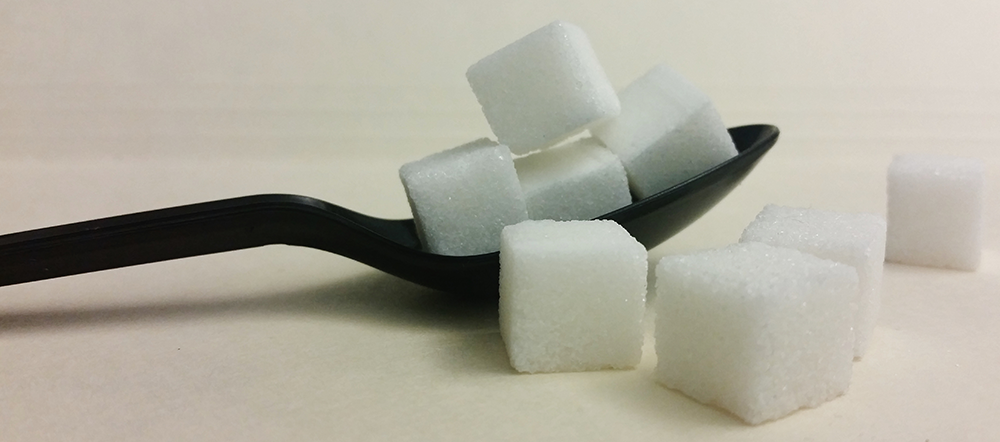By: Rebecca Cline
Are you aware of how much added sugar you are consuming? There are 120 teaspoons in one pound of sugar. The average American consumes approximately 160 pounds of refined sugars each year. That’s over 19,000 teaspoons of sugar! Yikes!

Consistently consuming excess sugar can lead to tooth decay and cavities, obesity, type 2 diabetes, heart disease, high blood pressure, and many other detrimental health conditions. It can even contribute to nutrient deficiencies due to providing calories but limiting nutrients. In other words, added sugars are empty calories that provide little to no nutritional benefit whatsoever.
Some obvious places to find sugar are in candy bars, sodas, baked goods, and ice cream; however, it is also often hidden in food items that you would not normally consider “sugary.” For instance, did you know that there are added sugars in ketchup? What about bagels, cereals, salad dressings, sauces, and yogurts? Watch out for sugar shocks and traps, as sugar is added to many foods to improve taste. This may be challenging to recognize when reading nutrition labels, since sugar can be disguised by many other names.
Consider limiting or modifying the amounts of foods or food products you enjoy if the ingredient list includes one of these disguised sugar names:
- Sucrose
- Cane crystals
- Fructose
- Evaporated cane juice
- Maltose dextrose
- Corn sweetener
- Stevia
- Molasses
- Glucose
- High fructose corn syrup
- Fruit juice concentrates
Still have a sweet tooth?
Consider munching on something that has natural sugar as opposed to added sugar. (Click here to learn about natural sugars). Fruits with natural sugars contain fiber, which makes sugar less harmful to the body. Plus, unlike empty-calorie sugary foods, fruits DO have nutritional benefits! Next time, enjoy some of nature’s fresh candy before choosing a processed treat with added sugar.
To learn more, visit www.sugarawareness.com.

